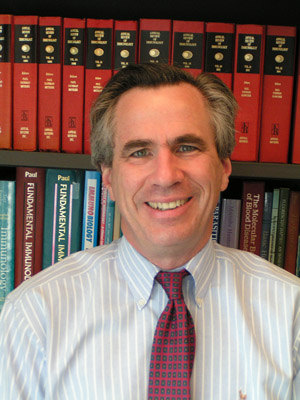 Dr. Robert SilicianoUse of combinations of antiretroviral drugs in “cocktails” to attack different parts of the HIV life cycle is the reason why most HIV-positive people maintaining undetectable viral loads can anticipate a normal lifespan. But the key obstacle to curing HIV remains the latent reservoir of virus, which is impervious to standard anti-HIV drugs. It has been a target of numerous research teams, many centered on a “kick and kill” approach by which dormant, HIV-infected cells are activated, rendering them susceptible to drug- and immune-based attack.
Dr. Robert SilicianoUse of combinations of antiretroviral drugs in “cocktails” to attack different parts of the HIV life cycle is the reason why most HIV-positive people maintaining undetectable viral loads can anticipate a normal lifespan. But the key obstacle to curing HIV remains the latent reservoir of virus, which is impervious to standard anti-HIV drugs. It has been a target of numerous research teams, many centered on a “kick and kill” approach by which dormant, HIV-infected cells are activated, rendering them susceptible to drug- and immune-based attack.
Such a strategy demands a robust shock to the latent state, but so far no single pharmacologic approach—using classes of drugs known as latency-reversing agents (LRAs)—has come close to the required potency. amfAR-funded scientist Dr. Robert Siliciano and colleagues at Johns Hopkins, Columbia, and Harvard Universities, writing in the May issue of The Journal of Clinical Investigation, have now put numbers on the amount of viral production an LRA needs to induce to be effective. Using the level of T cell activation required for maximum reactivation of dormant HIV in the test tube as the benchmark, the most potent drug tested thus far, bryostatin-1, could only get us 4% of the way.
A possible solution? Returning to lessons learned in designing antiretroviral therapy cocktails, Siliciano and associates explored two-drug combinations of mechanistically distinct LRAs. Using resting CD4+ T cells from HIV-positive individuals as targets, they found that certain LRA combinations acted synergistically to induce HIV growth. Equally important, this occurred without the release of proinflammatory immune hormones or cytokines, which can have deleterious side effects. They also developed a quantitative assay that uses the information gained from their test-tube studies to predict how effective the drug combinations might be in patients.
Dr. Laurence is amfAR’s senior scientific consultant.